- News
- Reviews
- Bikes
- Components
- Bar tape & grips
- Bottom brackets
- Brake & gear cables
- Brake & STI levers
- Brake pads & spares
- Brakes
- Cassettes & freewheels
- Chains
- Chainsets & chainrings
- Derailleurs - front
- Derailleurs - rear
- Forks
- Gear levers & shifters
- Groupsets
- Handlebars & extensions
- Headsets
- Hubs
- Inner tubes
- Pedals
- Quick releases & skewers
- Saddles
- Seatposts
- Stems
- Wheels
- Tyres
- Tubeless valves
- Accessories
- Accessories - misc
- Computer mounts
- Bags
- Bar ends
- Bike bags & cases
- Bottle cages
- Bottles
- Cameras
- Car racks
- Child seats
- Computers
- Glasses
- GPS units
- Helmets
- Lights - front
- Lights - rear
- Lights - sets
- Locks
- Mirrors
- Mudguards
- Racks
- Pumps & CO2 inflators
- Puncture kits
- Reflectives
- Smart watches
- Stands and racks
- Trailers
- Clothing
- Health, fitness and nutrition
- Tools and workshop
- Miscellaneous
- Buyers Guides
- Features
- Forum
- Recommends
- Podcast
review
£969.99
VERDICT:
Reliable and consistent data with useful swappable pedal body for different road and off-road cleats
Accuracy
Ability to switch between road and off-road on a seasonal basis
Battery life
Expensive compared to competition
Coin battery door not as secure as a permanently sealed system
Weight:
330g
Contact:
At road.cc every product is thoroughly tested for as long as it takes to get a proper insight into how well it works. Our reviewers are experienced cyclists that we trust to be objective. While we strive to ensure that opinions expressed are backed up by facts, reviews are by their nature an informed opinion, not a definitive verdict. We don't intentionally try to break anything (except locks) but we do try to look for weak points in any design. The overall score is not just an average of the other scores: it reflects both a product's function and value – with value determined by how a product compares with items of similar spec, quality, and price.
What the road.cc scores meanGood scores are more common than bad, because fortunately good products are more common than bad.
- Exceptional
- Excellent
- Very Good
- Good
- Quite good
- Average
- Not so good
- Poor
- Bad
- Appalling
The Garmin Rally RK200 Dual-sensing Power Meter pedals perform incredibly well, providing reliable and consistent power readings while also proving to be weather resistant, so far. What's really appealing is the ability to transfer its power-reading spindle from road to off-road pedals, for accurate data across disciplines.
The price is very high, but I'd say the Rally is worth it if you mix up your terrain across seasons or for the odd event, and are looking for SPD-SL (road) as well as SPD (off-road) cleat compatibility. But don't expect to change between the two every other ride – it doesn't seem that well suited for serious multi-discipline riders tearing it up on both tarmac and gravel each week.
> Find your nearest dealer here
Power meters use strain gauges to measure the force you're putting down and are most commonly placed in one or both pedals, one or both cranks, in the chainring spider, or in the rear hub.
Pedal power meters arguably have the best versatility as you can easily swap the pedals between bikes. Garmin's latest arrival builds on this concept, expanding the pedals' potential usage to include off-road terrain. The power meter itself being built into the spindle means pedal bodies are interchangeable, too; all you need to do is get the upgrade kit and teach yourself how to make the swap.
Are you a roadie? Well you are reading road.cc so let's go with yes. And did you recently invest in a gravel bike? A lot of us have, and so having a power meter that can be used across your road and gravel bike is the sort of versatility that would be of great help.
Not going to lie, since finding my way onto gravel tracks, I've half enjoyed these outings as a switch-off from the fields of data that I pace my road rides by. You're out in the middle of the countryside, away from cars and away from all that power data noise too, and it's just bliss – well, most of the time.
> How to go bikepacking: A beginner’s guide
Gravel terrain is also tough, requiring me to push with all my might to get up some steep ascents, so I've also been intrigued about my power numbers. While heart rate is a useful metric for gauging how hard you're finding the terrain, there's no denying that it's satisfising knowing how much you're truly trashing the pedals. This is where the Rally family can really help you out...
Rally family
The Rally power meter pedal system is Garmin's fourth generation power meter pedal, taking over from the Vector 3, with the original being the Vector pedals launched way back in 2013.
The new Rally range consists of Shimano SPD-SL (road), Look Keo (road) and Shimano SPD (off-road) cleat-compatible pedal bodies, with the option of either single or dual power measurement.
The model I have on test is the Rally RK200, which is the dual-reading road option for Look Keo cleats. Breaking that down, RK stands for the road with Look Keo cleats, while RS is for road with three-bolt SPD-SL cleats, and XC for two-bolt SPD cleats typically used off-road. Numbers-wise, 100 means single sided and 200 is for double-sided power.
You can start off with a single-sided Rally power meter, and later upgrade to dual power if left/right metrics become important to you.
As I've mentioned, the pedal bodies are also interchangeable with a conversion kit, as it's the spindle that's responsible for the power measurements. The Rally pedal ecosystem allows you to switch between Look and SPD-SL cleats, and even to completely different terrain with the off-road SPD system – there's a lot of scope for upgrading and adjusting if your needs change, or you've saved up some more money.
The RS and RK road pedals have a stack height of 12.2mm while the XC off-road pedals have a stack height of 13.5mm.
Garmin lists the Q-factor for all three options as 53mm, or 55mm with the supplied washers. Standard Shimano Dura-Ace PD-R9100 and Ultegra PD-R8000 pedals are 52mm, with the option to swap in a longer 4mm spindle should you want a wider stance. With just a 1mm-wider Q-factor, the Rallys can pretty closely match your current setup.
(Q-factor is a term for both the distance between the outer surfaces of the cranks, and the measurement between the centreline of the pedal and the end of the threaded section, as here.)
Set up and calibration
The Rally power meter pedals can be installed and removed with a standard 15mm pedal spanner, which means they are easy to move across bikes.
To connect up, the pedals can be paired with your cycle computer and the Garmin Connect app, as well as training platforms such as Zwift. The Rallys broadcast over ANT+, or Bluetooth for use with a greater range of electronic devices. If you have a device that is ANT+ compatible, make sure to pair with ANT+ as you're less likely to experience dropouts.
> 12 reasons why you should buy, and use, a power meter
Next up is performing a zero-offset (or 'calibration' as the Garmin Connect app calls it) to obtain accurate data, and this can be done easily from the Connect app or your cycle computer. If your crank length is not 172.5mm, make sure to change this field to the correct crank length before calibrating.
Garmin recommends performing this zero offset calibration once the bike is fully adjusted to the temperature it's in for the most accurate results – Garmin reckons that takes about 10 minutes per 10°C. So if you're doing a road ride, pop your bike outside before putting on your shoes, helmet, filling up your water bottle and so on, then 'calibrate' and off you go. Garmin's temperature compensation should then ensure that offset is maintained throughout if the temperature changes across the ride.
So much data
While the single-sensing pedals provide power only, the dual-sensing pedals offer you even more data for advanced performance insights, which Garmin calls Cycling Dynamics.
There's data on left/right balance, power phase (which part of the pedal rotation you're putting the power in), platform centre offset (whether you're pressing more on one side of the pedal platform), as well as seated and standing time.
It's an impressive analysis tool for sure, but I think Garmin's Cycling Dynamics seems more useful if recovering from injury – I don't really find myself analysing these metrics on a regular basis. However, the data is there, and so if you find yourself looking for minor adjustments to maximise your performance, you've got plenty to go by.
Battery
The pedals are powered by a single replaceable, disposable CR1/3N coin cell battery in each pedal rather than a permanent rechargeable system via USB, as used in Favero's Assioma Duos. If you don't have any CR1/3N batteries to hand, four LR44/SR44 batteries (two in each pedal) can be used instead.
Garmin claims that the Rally pedals have a battery life of 120 hours, which is significantly more than the 50 hours of the Assiomas.
To put the Rally battery life into perspective, on average I tend to ride no more than 10 hours a week, so that's 12 weeks of riding, three months, before needing to replace the batteries.
What's handy about the Rally cell battery system is that you can replace drained batteries with fresh fully charged up new ones instantly, so you're ready to record power again without any delay. You also aren't reliant on a mains socket or a portable battery pack, which makes things more straightforward and easier for bikepacking trips.
On the other hand, if you're a fair way through a battery, you can end up swapping in fresh ones before you really need to, just to be sure it won't run out – which is a little wasteful. With a rechargeable system you can just top things up. Also, it's easier to clip on the magnetic rechargeable cable than mess around with Allen keys and fiddly little batteries.
The removable battery covers (on the outer end of the spindle) could be a weak point for water ingress, and when changing the batteries these doors are also subject to wear and tear. The battery door can be opened with a 4mm Allen key, so not much chance of stripping the socket, unlike with 2mm bolts. Just in case they do get damaged, Garmin has made spare battery doors available for £25.99 (each side).
The battery compartment now has a metal thread and the battery contacts have been redesigned, as these were both problem areas for some Vector users.
Garmin gives an IPX7 water resistance rating, which means the pedals can be submerged up to 1 metre in water for 30 minutes and be all okay. Across the testing period I've ridden in heavy downpours and not had unusual data readings since – it appears to me that any issues with water damage have been solved with this new metal thread design.
Converting
Garmin hasn't sent me another pedal body to test transferring the spindle to, but I have attempted removing and replacing the spindle myself to understand the process, and to see how often I would be willing to make the swap over.
This is what you'll need to make the swap:
* 15mm pedal wrench
* Small Phillips screwdriver (PH 00)
* 12mm socket wrench with an outer diameter less than 17mm
* Torque wrench with 12mm socket head (to tighten the spindle nut to 10Nm)
* Bike grease
* 4mm Allen key
You can follow Garmin's video showing how it's done, or there are some read-through instructions here.
There are lots of tools to locate and the process is a little fiddly, but as with anything, you should get quicker the more you do it, especially when you aren't having to stop/start the video as you go along. On my second attempt it took me 15 minutes to remove and replace on the same pedal body (as I didn't have an XC one to swap to) for both pedals.
With the tiny 4mm screws I'd definitely want a table nearby to ensure I didn't lose them.
It's not something like switching between your racing wheelset and your hardier training wheels following your weekend's competitions or just before an evening spin in the lanes.
During the road racing season, I tend to ride four days a week on my road bike and one day on my gravel bike. So in theory I could do the switch on a weekly basis, but I'd be more inclined to only do so on a seasonal rotation or just before an off-road event, race or a self-organised multi-day bikepacking adventure.
Accuracy
Garmin claims the Rally power meter pedals are accurate to within +/- 1 per cent to the unit itself. If you're putting out 300 watts, the readings should always be between 297 and 303 watts. This is enough accuracy for keeping in the intended training zone for riding at the right intensity to get the benefits you're after for that workout.
As the accuracy percentage is to itself and not intended to be in relation to power meters from other brands, you may be wondering what's the point in comparing the numbers. Well, if you are going between power meters it can be useful to know how the power meter compares at both lower end and higher outputs. It's also handy knowing how fast the power meter responds.
I did a workout with a range of efforts from 5 seconds up to 10 minutes to spot any trends, comparing the data from the Rally pedals and my benchmark power meters after calibrating each device: an Elite Direto smart turbo trainer (+/- 2%) and Quarq DZero power meter (+/- 1.5%) that came as part of the SRAM Red eTap AXS groupset on the Liv Langma Advanced SL Disc I'm also currently testing.
Data analysis
You can find the full workout file with the power readings for each of the three power meter systems plotted together on a graph on Zwift Power over here.
For the 10-minute tempo effort you would have expected that the pedals would read the highest, and then the cranks and then the turbo, considering the losses and inefficiencies as you go from where your legs are exerting the power to the end of that chain.
Instead, the Elite turbo read highest at 208W, followed by the Rally pedals at 201W and the Quarq crank at 198W. Between the turbo trainer and the crankset, that gap is a little larger than what the +/-1.5% to 2% accuracy would account for, but hearteningly for the Garmin, it is at least within that for both those two power readings.
Make of the crank and turbo what you will, but the Rally pedals at least look to be in the right ballpark – it's not the outlier in any case.
Going up to ~300 watts for the 1-minute interval, we get a similar story, with the Elite turbo reading highest (311W average), Rally pedals in the middle (305W average) and Quarq crank the lowest (299W average).
In the sprints aiming for 700 watts, for maximum power value the Elite turbo is still reading highest (722W average) and the Rally pedals is in the middle (710W average) with the Quarq crank the lowest (696W average).
Overall, the percentage differences between the Quarq crank and Elite turbo from the Rally pedals stick between -1.5% and +3.5% across the 10-second and 10-minute tests. This shows that the Rally pedals are reading pretty consistently, relative to the other power meters, across lower and higher power values.
Looking closely at the shape of the graph for the 10-second sprints, the Quarq profile has a much smoother line compared to the Rallys, which is starting to get a little blocky, although not to the extent of the Elite turbo's line. The crank does seem to give a more complete picture of the data, but the Rallys do a good enough job at picking up the data for most needs.
Where the Rallys really impress is with how responsive they are to picking up when you start and stop pedalling. In the test where I pedalled for 10 seconds and stopped completely for five seconds, it was showing zero watts for four and five seconds, whereas the Quarq would only read zero for between one and two seconds, and the Elite didn't drop to zero at all.
Speaking from Zwift racing experience, to get into the super aero tuck position (so you can sneak in some recovery mid-race) a quick response time is important as the position is only activated when your power drops to 10 watts or less when you're travelling above 35mph (57km/h) on a 3% or steeper descent – the Rallys will cover you excellently for this.
Value
The single-sensing Rally pedals cost from £569.99 to £619.99, while the dual-sensing pedals cost from £969.99 to £1,059.99. Upgrading from a single-sensing system to a double-sensing system will cost an extra £489.99 to £529.99.
The dual sided Vector 3 pedals cost £849.99 so Garmin has upped the price with the Rallys. This price rise also increases the gap between Garmin's offering and that of Favero, the Italian competitor.
> Cycling power meters: explore these 25 systems to find the best one for you
Favero's Assioma Duo power meter pedals are a much more reasonable £699 for the dual-sided version, and £449 for the single-sided Assioma Uno version.
Weighing in at 300g, the Assioma Duos are also lighter than the Rally pedals I had on test, which tip the scales at 330g.
Previously, Favero's Assioma could only be used with Look Keo style cleats, but the new DUO-Shi is a spindle designed to fit into existing Shimano pedal bodies. There's a catch, though: Favero had to significantly increase the stance width from the industry standard 54mm to 65mm, which could lead to bike fitting issues for some riders.
Overall
Overall, the Garmin Rallys really impressed, but at that sky-high price you'd expect nothing less. Data accuracy is consistent and reliable for training and racing use, as well as measuring your efforts across different terrain. I've also been caught up in some heavy summer downpours during the test period, and haven't noticed any unusual readings since – with the new metal thread for the battery door closure, the Rallys appear to be much more reliable after rainy rides than the previous Vector 3 generation.
For multi-discipline riders, the Rally pedals are certainly an appealing system and this USP could justify the high price.
Just one caveat, though: riding off-road tends to be a more vicious experience, with pedal strikes being more common. I've only tested the road versions, and while there is that off-road compatibility, I cannot comment on its ability to survive these sorts of less avoidable knocks.
Verdict
Reliable and consistent data with useful swappable pedal body for different road and off-road cleats
road.cc test report
Make and model: Garmin Rally RK200 Dual-sensing Power Meter
Size tested: Look Keo
Tell us what the product is for and who it's aimed at. What do the manufacturers say about it? How does that compare to your own feelings about it?
Garmin says: "Rally RK200 is tested to the extreme, so you can ride there too. This dual-sensing power meter delivers reliable power measurements and is easy to transfer between bikes no matter what bike you're on or where you're riding.
It installs like any other pedal and is easy to swap from bike to bike. Yes, really.
Take a deep dive into your performance by measuring total power, cadence and more.
Clip in with ease. These pedals are compatible with LOOK KEO cleats.
Edge cycling computer compatibility makes software updates and data uploads easy.
Sync data to your favourite apps for even more analysis and data sharing.
It's more than just watts. Advanced cycling dynamics show left/right balance and more."
Tell us some more about the technical aspects of the product?
From the Garmin website:
Battery life - up to 120 hours
Advanced Cycling Dynamics
Transferable spindle
Left/right balance
Platform centre offset
Seated vs. standing
Power phase
Battery type: LR44/SR44 (x4) or CR1/3N (x2)
Maximum rider weight: 105 kg
Accuracy: +/- 1%
Field calibration
Adjustable release tension
Measurement location: spindle
Communication: ANT+ and Bluetooth
Weight: 326 g
Water resistance.: IXP7
Cleat type: KEO
Q-factor: 53 mm (55 mm with provided 2 mm washer)
Stack height: 12.2 mm
Rate the product for quality of construction:
9/10
Feel very well made – they're sturdy.
Rate the product for performance:
9/10
Consistent, easy to set up, and lots of data to analyse for maximising your performance with Garmin's Cycling Dynamics.
Rate the product for durability:
8/10
Pedals are working fine after two months of use, with no aesthetic damage. However, removing the door for battery changes could be a place for wear and tear, and self-imposed damage.
Rate the product for weight (if applicable)
8/10
Not the lightest – Favero's dual-reading Assioma pedals weigh 300g which makes them lighter than the Rallys that weigh 330g.
Rate the product for value:
4/10
Priced at £968.99, this is much more expensive than Favero's reliable Assioma Duo pedals that cost £699. But the Rallys do have the USP that they can be converted for off-road use, which adds value.
Tell us how the product performed overall when used for its designed purpose
Very well: weather resistant and accurate with a great pick-up response.
Tell us what you particularly liked about the product
The option to switch to off-road use on a seasonal basis with the SPD conversion kit.
Tell us what you particularly disliked about the product
Price and the battery system: a bit fiddly and subject to wear and tear.
How does the price compare to that of similar products in the market, including ones recently tested on road.cc?
More expensive than Favero's Assioma Duo, which cost £699.
Did you enjoy using the product? Yes
Would you consider buying the product? Yes
Would you recommend the product to a friend? Yes
Use this box to explain your overall score
If you're looking for a dual-sided pedal power meter, the Garmin Rallys aren't your cheapest option. But what they do offer is the unique opportunity to switch to off-road use and with the Cycling Dynamics data you can truly dig into your pedalling to maximise your performance.
About the tester
Age: 23
I usually ride: Road bike My best bike is:
I've been riding for: 10-20 years I ride: Every day I would class myself as: Expert
I regularly do the following types of riding: road racing, cyclo cross, commuting, touring, club rides, sportives, general fitness riding, Gravel riding, indoor turbo and rollers, track
Anna has been hooked on bikes ever since her youthful beginnings at Hillingdon Cycle Circuit. As an avid road and track racer, she reached the heady heights of a ProCyclingStats profile before leaving for university. Having now completed an MA in Multimedia Journalism, she’s hoping to add some (more successful) results. Although her greatest wish is for the broader acceptance of wearing funky cycling socks over the top of leg warmers.
Latest Comments
- HarrogateSpa 31 min 40 sec ago
Skates wants to spend active travel money on dropped kerbs, seating and better bus shelters....
- Bigtwin 32 min 37 sec ago
It's a fashion. https://guildford-dragon.com/shalford-driver-who-smashed-shalford-war-me...
- Bigtwin 34 min 51 sec ago
I used to frequent CW. On topic, when I first started riding on the roads, there were some 30 million fewer people in the UK. It was very much a...
- Rendel Harris 40 min 27 sec ago
Care to back that statement up? As far as I'm aware this is the only incident he has had that he or anyone else has described as life threatening,...
- OldRidgeback 47 min 28 sec ago
There is CCTV in very many places in the UK. A charge of criminal damage wouldn't look good for job prospects and would also make travelling...
- MTL Biker 53 min 27 sec ago
Robin Phans .....
- mdavidford 59 min 17 sec ago
It's a swan uprising. (As opposed to a swan upping, which is a different thing altogether.)
- Rendel Harris 1 hour 1 min ago
"Complainer" in Scottish law is simply the legal term for the person who alleges that a criminal offence has been committed against them, the...
- Rendel Harris 2 hours 33 min ago
Well it would be irresponsible enough if there were only cars and buses, if there are going to be "cars, buses and traffic" that's just suicidal...
- UnholyGoatFeet 2 hours 43 min ago
It's always the same... People who don't even ride bikes, are the one's crying about change too there precious roads. Let's not bother asking...










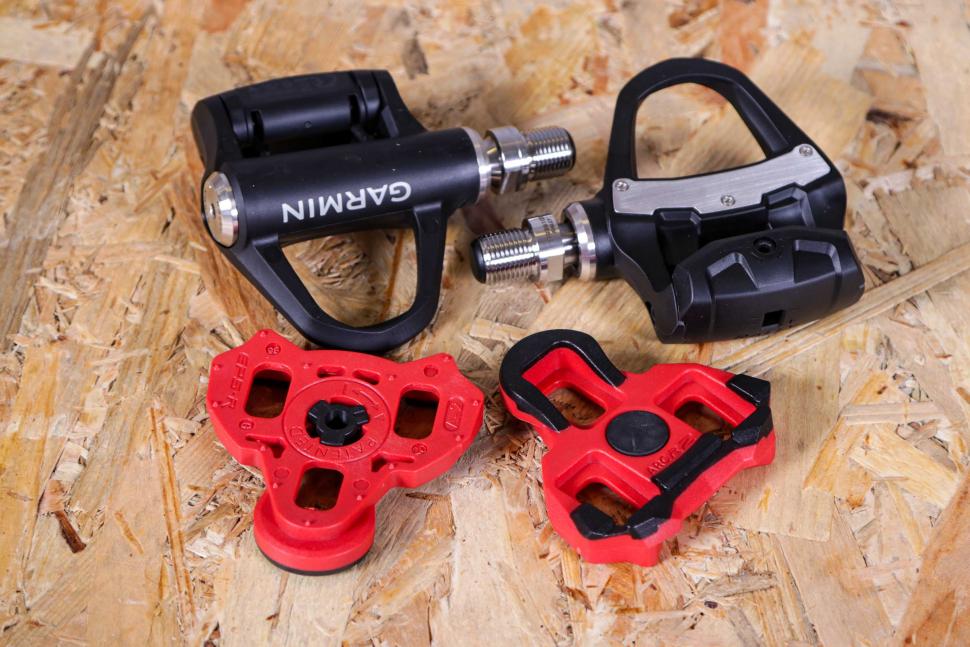
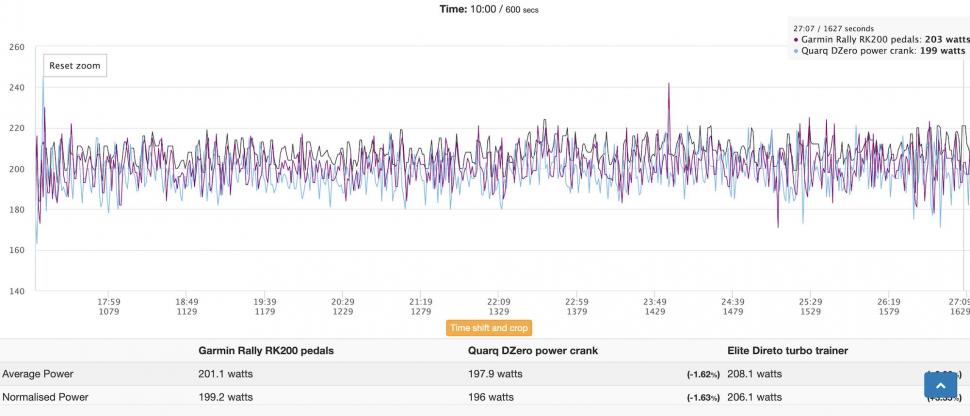
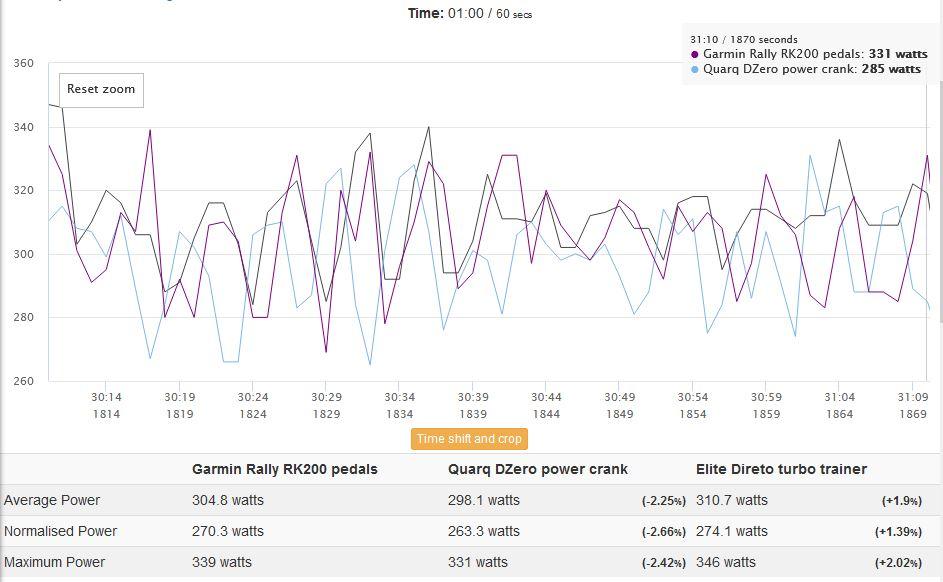

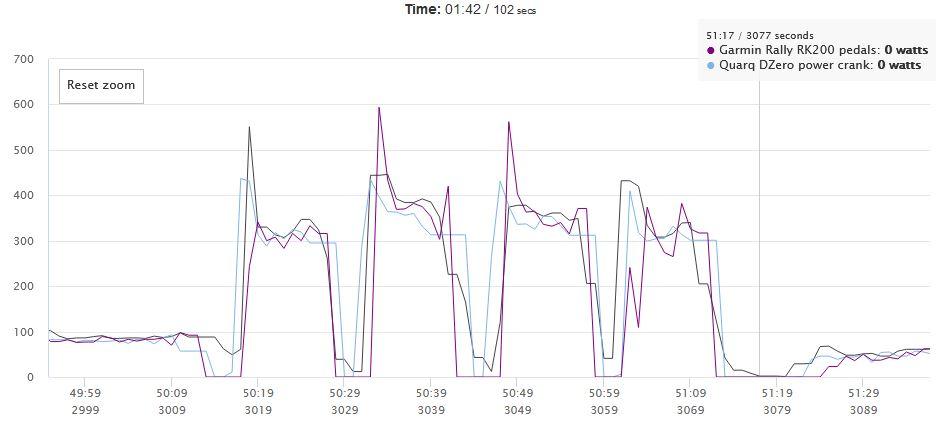
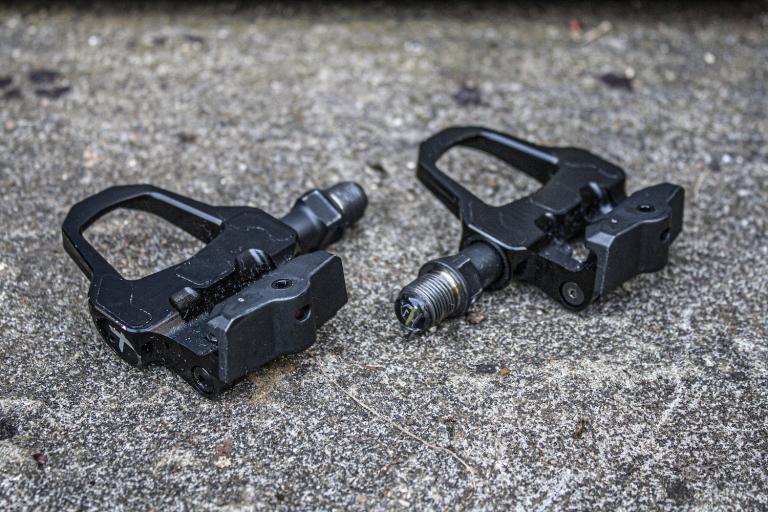
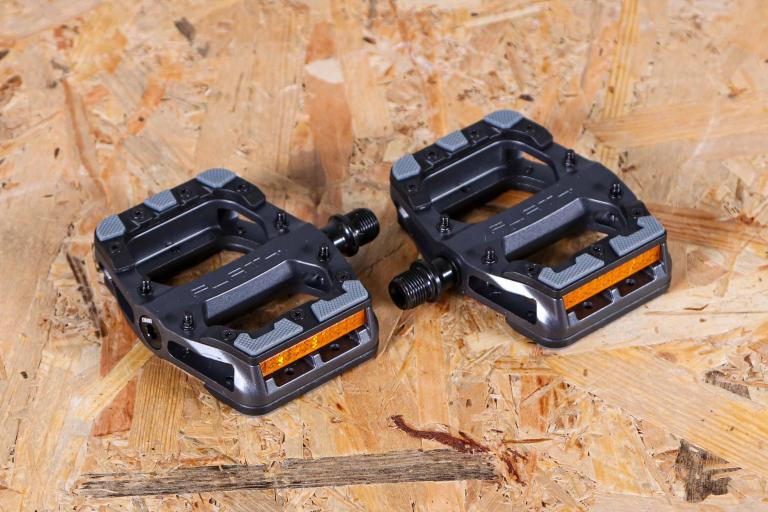
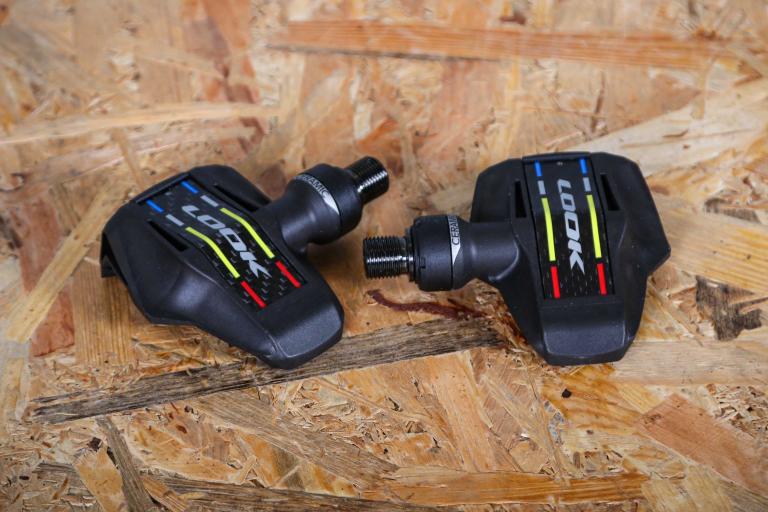
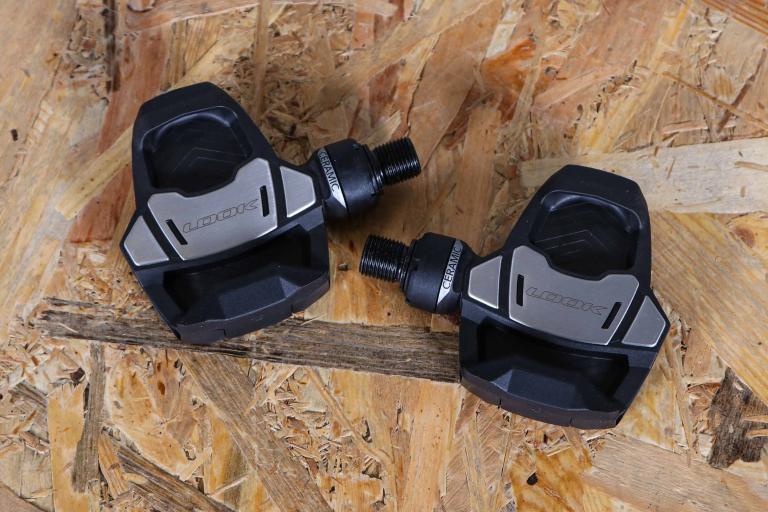
Add new comment
7 comments
For anyone who isn't aware you can do a similar body swap on the Favero Assioma, using xpedo pedals. This isn't approved by Favero so would void the warranty, but it's something I'm considering, just buying a single left pedal spindle for about c.£310. I've been using the Assioma Duo for over two years and they've been flawless. The exposed pod might be an issue if you ride rocky terrain but most of us are probably just on bridleways.
For little more than the price of the dual Garmins you could get the Duo's and another single side coversion, save having to swap bodies all the time.
I looked into that but it seemed the right Xepo versions were a pig to get hold of?
I purchased Garmin's Vector 3 (double sided) in 2018. After 6 months of usage they stopped working. I understand its due to a fault with the battery receptors. They released a new battery door to install, but I have to pay £25 for it (which I refuse to do).
I made the decision to never purchase another Garmin product again, as it seems to me they do their user testing with live products and then make a mint charging consumers for the fixes to their faulty products.
I had almost the exact same experience and vowed to never buy garmin again as well.
Btw I did get the battery door thing replaced for free but it didn't work for long. I got a warranty replacement but was told that's it, any more problems and I'm on my own. Considering the first set were useless for a large portion of the time I had them and considering the expense, I cut my losses and ebayed them.
I had several sets of Vector 3 pedals before I gave up and got something else. IMO one of the biggest design flaws was the battery door design. If you race and find yourself pedalling around corners often, if you were to slightly catch the edge of the pedal on the floor, the door unscrews and flys off on the left pedal. Not so bad on the right pedal but I wonder if they have reversed the thread on the left.
I really wanted a set of the SPD versions of these as I ride SPD's on road and gravel. The trouble is for the same price as the single sided version I could get TWO single sided crank arm PM's from 4iii or Stages (GRX and Ultegra in my case). As an added bonus I don't need to faff around swapping pedals.
The pricing makes no sense unfortunately garmin are never going to be the cheapest brand but they've lost the plot with this imo.
Hope they are more reliable than the Vectors. I knew a few people who had persistant problems with them before sending them back. I got a warranty replacement myself but was told there would be no warranty on the replacements...straight to ebay for them.